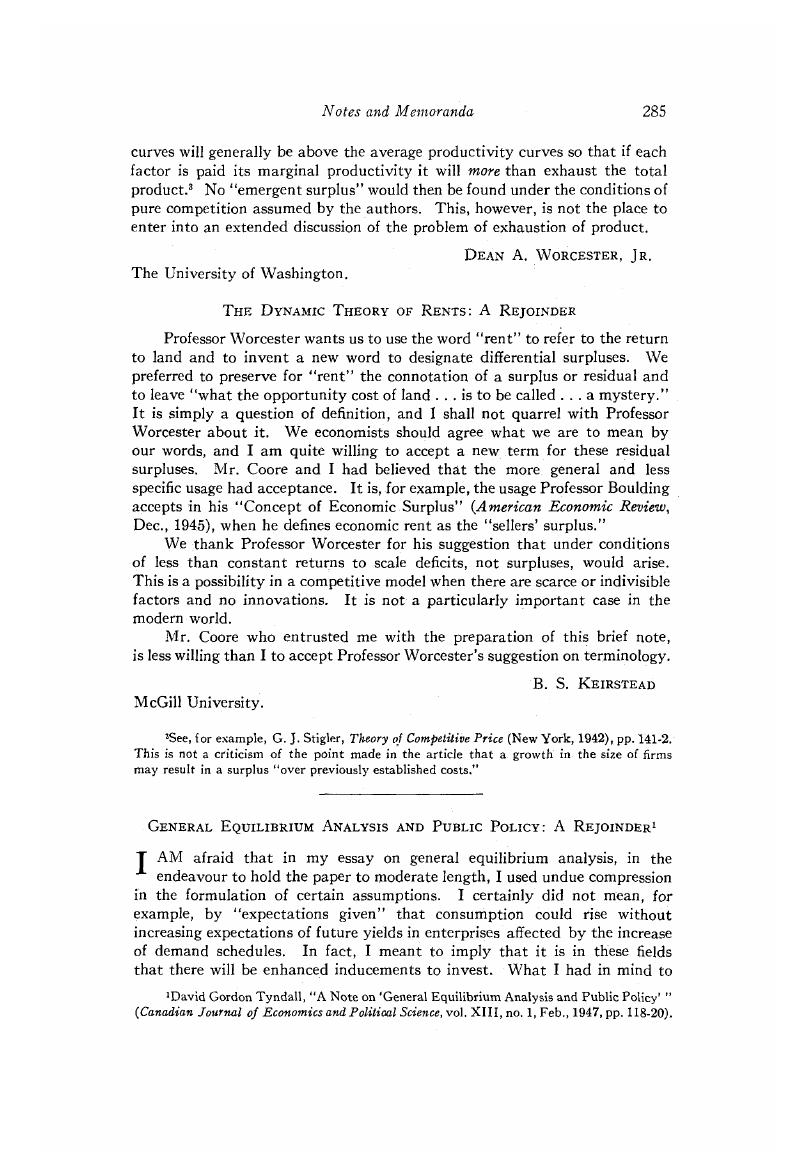No CrossRef data available.
Published online by Cambridge University Press: 07 November 2014

David Gordon Tyndall, “A Note on ‘General Equilibrium Analysis and Public Policy’” (Canadian Journal of Economics and Political Science, vol. XIII, no. 1, Feb., 1947, pp. 118-20).
2 Ibid., p. 119.
3 The only possibility of curtailed output that I can see would be where those who received income from the oligopoly were better customers of their own industry than are their workers. But it is just as possible, perhaps even more likely, that the workers may be better customers than those receiving income from the oligopoly.
4 Tyndall, , “A note on ‘General Equilibrium Analysis and Public Policy’,” pp. 118–20.Google Scholar
5 If there are dynamic shifts of the total market demand schedule which permit entrepreneurs to expand plant without meeting punitive action from oligopoly members, that same circumstance will remove the “kink” barring expansion of output from existing plant.